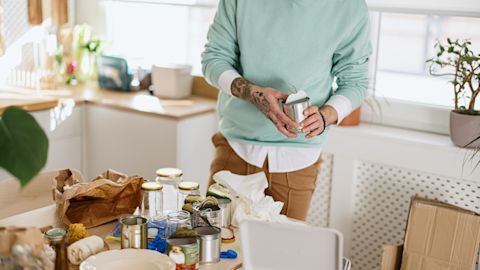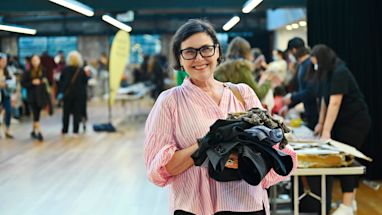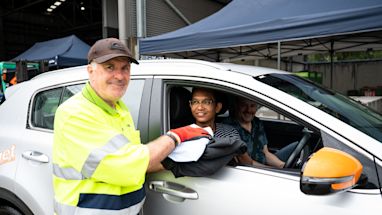You’re not alone if you’ve ever questioned what happens to your recycling.
If you’ve taken the time to sort your cardboard, bottles, jars, cans and containers from your rubbish, you can rest assured your recycling efforts aren’t going to waste.
Collection
Once our trucks pick up the recycling from your home, it’s taken to a recycling facility in Strathfield South.
On average, 87% of items put in the yellow lid bin are recycled. The rest goes to landfill. This is usually because of incorrect items, like soft plastics, being put into recycling bins.

Processing
Once the truck is unloaded, the recycling is put onto conveyor belts and employees manually remove large items that could damage the machinery including bagged recycling.
Machines sort the rest. Using magnets, star screens, trommels, infrared lights and air, the items are divided into paper and cardboard, plastic, glass, steel and aluminium. Once the recycling has been sorted, the material is sent for further processing.

Paper and cardboard
Paper and cardboard are cleaned, pulped and remanufactured. They become products like kraft paper and corrugated carboard boxes used by the packaging and food industries.
Pro recycling tip: It doesn’t matter how oily or greasy your cardboard pizza box is. If it’s empty, it can be recycled in your yellow lid bin. So, make sure you eat every last slice.
Glass bottles and jars
Glass is crushed and sorted into colours onsite. It’s sold to manufacturers to create new glass bottles and jars. Broken glass unsuitable for new bottles is crushed into quality sand for infrastructure projects.
Pro recycling tip: If your glass bottle has a metal top that can’t reattach, like a beer bottle, put a few inside a tin can and squeeze the lid shut for easy recycling. They’re too small to be recycled by themselves.
Plastic bottles, trays and containers
Plastics are sorted into 6 types using optical sorting machines. These plastics are shredded, washed, sterilised and turned into plastic pellets which are moulded into new products.
Pro recycling tip: Leave lids and labels on your plastic bottles. That way they won’t get lost or jam the recycling machinery.
Aluminium foil, trays and beverage cans
Aluminium is crushed, baled and sent to an aluminium smelter overseas. There, it’s shredded, melted and turned into new products.
Pro recycling tip: Aluminium foil can be recycled. Just scrunch it into a big ball, about the size of a tennis ball, so it’s heavy enough for the recycling machinery to sort it. You can combine small bits of foil until you have enough to put in the yellow lid bin.
Steel food cans
Steel is crushed, baled and sent to a local processor, where it's shredded, melted and turned into other products.
Pro recycling tip: Remove all food and liquid from cans before recycling, otherwise they could end up in landfill.

Check before you buy
Next time you put an item in your yellow lid bin, or down the recycling chute, you can trust it will be treated as a valuable resource and used to remanufacture new products.
So, when you’re browsing the shopping aisles, check to see if the item can be recycled before you buy it. Look out for the Australasian Recycling Label – a classification system for packaging that makes recycling easier. This label tells you which part of the package belongs in the recycling bin, the rubbish bin, or if you need to do something else with it.
Better yet, choose products made from recycled materials. This is a big step in creating a circular economy and preserving our environment.
Published 22 October 2021, updated 11 November 2025



